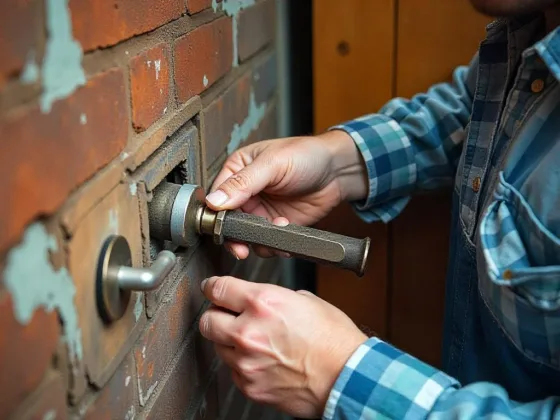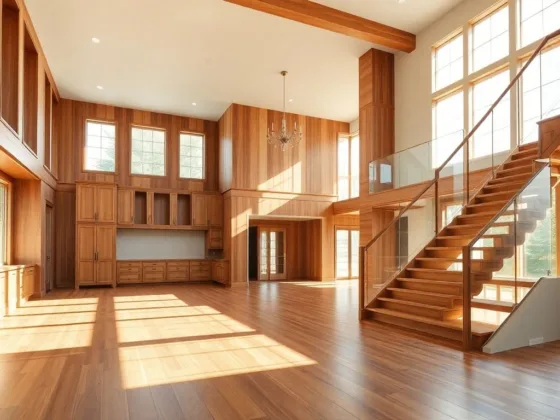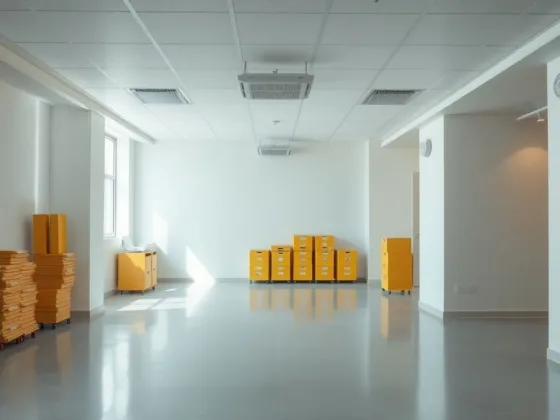Table of Contents Show
Wooden houses, becoming a common choice of settlers, began to be valued as a decent housing option just in a few previous decades. Although this type of house has been built for many years (our grandparents and great-grandparents grew up in it), modern log cabins differ from the old type a lot.

According to the specialists of Maestro Cabins, believing in old stereotypes about log cabins still often prevents settlers from choosing the most suitable housing option for permanent living.
Therefore, we have decided to single out 5 key myths about a residential log cabin that are denied by professionals in the field.
MYTH 1: Log Cabins Are Less Fire Resistant
One of the most commonly discussed topics in the context of the shortcomings of wooden houses is the fire resistance of these buildings. Experts point out that the claims about log cabins catching fire and burning much faster are mostly based on stories from the past.
According to them, when considering the properties of a modern wooden house, it should not be forgotten that the times when people lived with open fireplaces and uninsulated wires are already in the past. Therefore, modern wooden houses are also very different from the old ones.
This can also be noticed by a closer look at the summaries of disasters in wooden houses which are usually built a very long time ago and have not been renovated as well as do not meet primary safety requirements.
Specialists emphasize that the construction of modern wooden houses uses flame retardant (chemical from fire) treated wooden constructions, which reach the highest European flammability class for wood, so the probability of fire in wooden constructions is no different from the probability of igniting other constructions.
It is also important to emphasize that the construction of log houses is subject to even lower requirements. Wooden houses belong to the third class of fire resistance, which results in much simpler requirements when choosing building materials and the possibility to choose simpler construction solutions.
The essential requirements for these buildings are to reduce the risk of fire – it is a must to paint the buildings with special paints and to maintain an increased distance of 15 meters from adjacent buildings.
It is also recommended to pay special attention to the installation and assembly of various equipment when it comes to heating and electrical installations. It is necessary to remind that improperly installed equipment of this type often becomes the cause of the fire, regardless of whether the house is built using wooden structures or masonry blocks.
MYTH 2: Log Cabins Are Less Durable
It is hard to deny that perhaps the biggest expectation we have when choosing any type of residential log cabin is durability and longevity. Although it has been thought for many years that homes made of natural logs are inferior to other types of homes in terms of durability, well-maintained modern wooden houses will remain in perfect condition for 30 years.
According to the team of Maestro Cabins, the durability and quality of wooden houses, compared to buildings made of steel and concrete, often far outweigh the price of regular and high-quality maintenance is ensured.
It is well known that, like any other natural material, wood is a good growth medium for rot fungi, powdery mildew, mold.
However, if the wood is properly protected, it will be resistant not only to harmful environmental factors but also to oxidation, which tends to form stains on the facade surface, damaging the overall appearance of the facade.
The properties of wood, such as strength, resistance to loads, and ease of processing, which not only affect the durability and longevity of the house but also determine the simple construction process of the wood, cannot be ignored.
Materials of exceptional durability allow the construction of residential log cabins up to three floors. Modern wood processing technologies also make these houses more accessible to lower-income settlers every year.
Read Also:
MYTH 3: Log Cabins Have Worse Thermal Insulation
Although a brick or block house may look like a warmer option at the first glance, this assumption is wrong according to experts of wooden houses. The truth is that achieving the same thermal resistance in other types of houses (as in an uninsulated wooden house) will require a lot of money.
Generally speaking, when comparing brick and wooden houses which are not insulated, a wooden one will significantly perform much better results because of its natural thermal resistance.
However, to ensure the highest thermal resistance in your house, it is necessary to pay attention to the fact that the thermal insulation of a wooden house, like the insulation of brick or blockhouse, depends not only on the insulated walls. According to general estimates, as much as 25% of heat loss is due to windows and doors, and 10-15% to the ceiling.
Although wood is often mentioned as a material that provides excellent heat and sound insulation, good insulation of a wooden house requires special attention to detail. This is because a wooden house built of individual parts, unlike a brick house, is not made of a solid material, which ensures tightness.
MYTH 4: Finishing A Wooden House Costs More
It is not a secret that naturally occurring wood often looks like a material that requires much more care. True, given that the walls of each house are constantly exposed to different weather conditions, and wood is a natural material, it is difficult to deny that the protection of the wooden walls requires special attention.
However, to ensure the excellent condition of the brick or block house facade, it will also be necessary to invest in it. Therefore, according to experts, it can be stated that the cost of facade finishing and maintenance, regardless of the type of house chosen, will depend on the finishing layer.
Concerning the exterior of wooden houses, it is important to emphasize, that any decoration is necessary if you take care of the protection of the external wood layer.
It is true that if the aim is to preserve the naturalness of the building, it is necessary to ensure regular maintenance of the walls with special, high-quality protection materials. From a technical point of view, the main advantages of wooden facades are particularly good self-insulation and air circulation, as well as low operating costs.
However, it is worth noting that these properties of wood are affected not only by the type of wood chosen but also by the appropriate, constantly maintained protection of the wooden facade, which is also not a very cheap solution.
It is worth mentioning that one of the most common facade options for wooden houses is ventilated facades which have an air gap for ventilation in between the wall and thermal insulation layer.
Thanks to it, ventilated facades, compared to other types of facade constructions, have many significant advantages: from the exceptional protection of the house walls to unsurpassed durability. It is important to emphasize that this type of facade can also be chosen for houses built of brick blocks.
One of the biggest advantages of a ventilated facade is protection against the problems caused by excess moisture, which becomes especially important when choosing a wooden house structure.
An equally important advantage is that ventilated facades do not leave cold bridges due to the air gap, and, in the case of a wooden building without insulation, it also allows to increase the thermal resistance of the log cabins walls.
In the case of brick houses, the question of finishing is a bit simpler – a wet facade or clinker layer is usually used. However, compared to the cost of finishing a wooden house, a wet facade or clinker tile will cost much more.
When installing a wet facade, it is common to use only one main material that provides thermal insulation to protect the house from the negative effects of the environment. This choice might reduce the cost of insulation.
Although houses with such type of facade do not have good air ventilation, due to the extremely high level of insulation properties, they allow to significantly reduce the heating costs and their price is one of the most affordable on the market.
When choosing a clinker finish for a brick house, the tiles glued on a properly installed reinforcement layer have many noteworthy properties, but the greatest advantage of clinker tile facades is their’ durability.
One of the main reasons why clinker tile facades are so popular in the construction market is the resistance of the tiles to moisture. Clinker tiles have an extremely low absorbency, and it is closely related to the frost resistance of brick houses.
In short, it is wrong to say that the finishing of a residential log cabin and regular, high-quality maintenance of its’ walls will always cost more than the finishing of brick or blockhouse. The costs of both depend on the chosen finishing solution.
MYTH 5: Building Log Cabins Takes Longer
According to the specialists of Maestro Cabins, it is often encountered that houses made of brick blocks are built faster than natural wood houses. It is a myth.
Due to the simple constructions, wooden houses are characterized by an extremely simple construction process – the constructions can be assembled quickly and without specific knowledge.
On average, assembling a house made of natural wood takes 1 to 7 working days (unless the project is very complex). In the case of a brick house, its construction can take months.
This means that if you decide to choose a wooden house for permanent life, you will be able to move into it much faster than in a brick one.
The construction of a wooden house is much faster because, firstly, it does not require a lot of wet construction work – for example, there is no need to wait for the masonry mix to dry. It is also important to mention that the construction of a wooden house can be carried out in practically any weather.
Many of the works necessary for the construction of brick houses cannot be performed during wet and cold days while wooden houses can be built even in winter.
According to the specialists of wooden houses, the much faster construction of a wooden house undoubtedly has a direct impact on the cost of building a house. The lower complexity of the work does not require the use of expensive equipment, building materials can be delivered by easier transport even to hard-to-reach places.
The wooden house also has greater advantages in case of reconstruction. For example, if you come up with an additional wall sometime after the building process is finished, it will be enough to lay additional boards.
In the case of a brick house, the implementation of such changes will require additional concreting of the wall, which will be more reminiscent of another construction process than a simple reconstruction.










